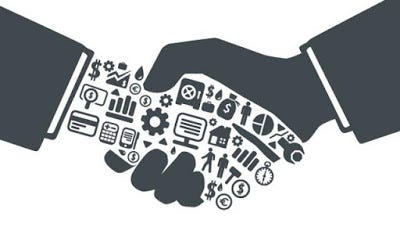Latest news about Bitcoin and all cryptocurrencies. Your daily crypto news habit.

I’m sure every person in the enterprise world knows the definition of b2b. B2B is short for “business to business.” It indicates sales made to other businesses, rather than sales to individuals. The latter is referred to as “business to consumer” sales, or b2c. This distinction makes the sales person think that b2b sales is very different from b2c. B2B requires a lot of interpersonal skills and lots of casestudies to get across to that particular influencer who needs to be convinced that your product/service is going to make a change to his organization. Is that right? Before we get into the details of b2b selling, lets have a look at this particular statistic from Forrester Research.
“1 million B2B sales jobs in the U.S. will be obsolete by the year 2020.” — Forrester Research
What does this mean? And why is the b2b landscape changing a lot? Before we answer those questions, lets have a look at what b2b selling means.
B2B selling is a step by process where you start from scratch and build up the trust and rapport with your prospects. It is definitely not a one time effort and requires a lot of farming to increase your success rate. That is the reason why, seasonal professionals are better at executing strategies than the new comers. That doesn’t mean nobody could shine without experience. It requires a definite understanding of the process and how B2B works. Listed below is the basic framework under which the sales happens.
Explore: Here, buyers identify a need or opportunity and begin looking for ways to address it, usually via interactions with vendors and self-directed information search on the internet.
Evaluate: Buyers take a closer look at options uncovered while exploring, again leaning heavily on self-directed search and peer interactions as well as vendor sales representatives.Engage: Buyers initiate further contact with providers (or accept proposals from providers) to get help in moving toward a purchase decision.Experience: Buyers use a solution, increasingly in pilots or proof of concepts, and develop perceptions about its value based on that usage.
Here are the few statistics that will make you turn your head.
“Market is expected to grow to $1.1 trillion by 2020” (Source)“70% of buyers research online before buying” (Source)
With these points in mind, how do you increase your sales and turn the strategy of your organization? “The switching economy is estimated at $1.7 trillion dollars — making it the 10th largest economy in the world, and making churn a major issue we must face,” Mathew Sweezey points out. Add to that the fact that it costs five times more to acquire a new customer than to keep an existing one, and it’s clear why customer advocacy is so important. Customer advocacy goes beyond typical customer service because it extends to the entire company. It means putting the customer first in every aspect of your business — from your support team and your sales reps to the content you create and the product itself. A culture of customer advocacy invokes asense of trust in your potential clients, which is crucial for today’s B2B buyer.
According to Digital Capital Advisors, 86% of shoppers believe personalization influences what they purchase — and marketers agree. In fact, 94% of marketers say that personalization is an important part of their strategy. Of course, it’s impossible to manually personalize every interaction someone has with your company. That’s where dynamic content comes in. Dynamic content is HTML content on landing pages, in emails, or on your website that changes based on who’s viewing it. For example, your pricing page could change based on the user’s country, or an email could include personalized calls-to-action for contacts with different job titles (e.g., CTO vs. intern). The possibilities are quite literally endless.
Micro-actions, Sweezey explains, are small, phatic gestures that show a business cares about their customers and knows what they want. As he puts it, “These are the likes, comments, shares, reshares, etc. They are able to reliably break through the infinite noise because they are warranted, wanted, and valued by consumers and cannot be blocked by adblockers.” Liking a potential client’s post on LinkedIn is a micro action. Making sure they see your banner ad is not. The goal here is to build rapport, not to immediately sell your product. In a world where B2B sales reps are only engaged once a purchase decision has already been made, marketers have to fill in the gap with these authentic and personal online interactions.
There’s a second part where I write about how to leverage new technologies to tackle the big problem of b2b selling for your organization. Meanwhile, please leave your comments below.
Originally published at work.jeygeethan.com.
B2B selling demystified like a rock star — part one was originally published in Hacker Noon on Medium, where people are continuing the conversation by highlighting and responding to this story.
Disclaimer
The views and opinions expressed in this article are solely those of the authors and do not reflect the views of Bitcoin Insider. Every investment and trading move involves risk - this is especially true for cryptocurrencies given their volatility. We strongly advise our readers to conduct their own research when making a decision.